How To Play A Walking A Bass Line With Chords At The Same Time On One Guitar
by Simon Candy
 Today I want to show you an easy way to create what is one of the most recognisable sounds in Jazz, a walking bass line.
Today I want to show you an easy way to create what is one of the most recognisable sounds in Jazz, a walking bass line.
Walking bass lines are usually associated with the bass, but they can also be played on guitar. Not only will I demonstrate how to play a walking bass line in this article, but I will also teach you how to add chords to it, allowing you to play both the bass and chords simultaneously on one guitar!
You are going to love this sound!
Walking bass lines are not only pleasing to the ear, but they can also enhance your understanding of chord notes and progressions. This knowledge can enhance the quality of your solos by helping you make more melodic choices when selecting notes to play.
What Is A Walking Bass Line?
The purpose of a walking bass line is to create a feeling of forward motion in a song, hence the name walking bass. To create this forward moving motion, walking bass lines are typically played using quarter notes that fall on the beat (1, 2, 3, 4 etc).
A walking bass line serves two main purposes:
1. To outline the chord that is currently being played in the tune
2. To smoothly connect to the next chord in the tune
There are several approaches you can take when creating a walking bass line including:
• Chromatic approach
• Scale tone approach
• Arpeggiated approach
Exploring all three approaches is a vast topic that cannot be covered in a single article. However, I will guide you through the process of creating walking bass lines on your guitar, including playing the progression's chords, using the chromatic approach.
Walking Bass Line Progression
Here is the progression we will be creating our walking bass line around:

This is known as a II V I (2, 5, 1) chord progression and is the most common chord progression in the world of jazz.
Walking Bass Line Chords
Before I show you how to walk a bass line on your guitar through this progression, let’s look at the specific chord voicing’s you will use to play it, and include with your walking bass.
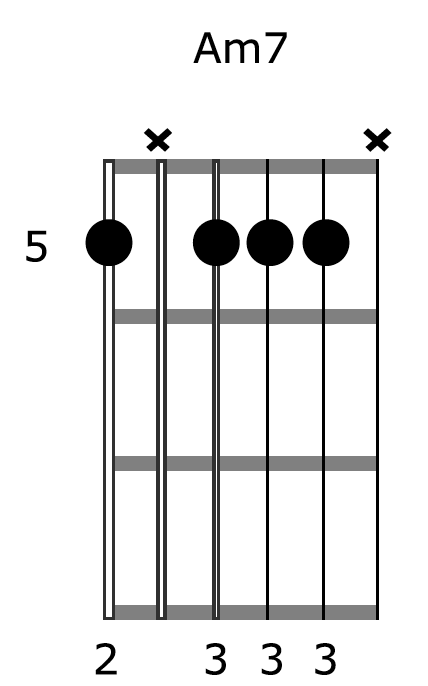
This is a very efficient way to play an Am7 as there are no duplicate notes in this particular voicing of the chord. It is used a lot in jazz and works well when playing a walking bass line around it, as you will see shortly.
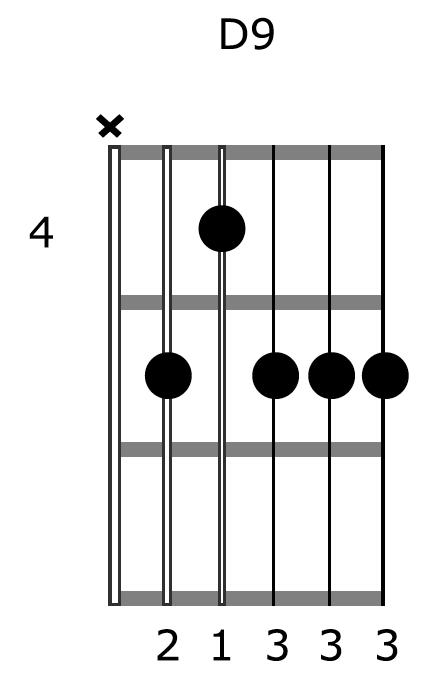
This is a common way to play a Dominant 9th chord in jazz and is very efficient as there are no duplicate notes.
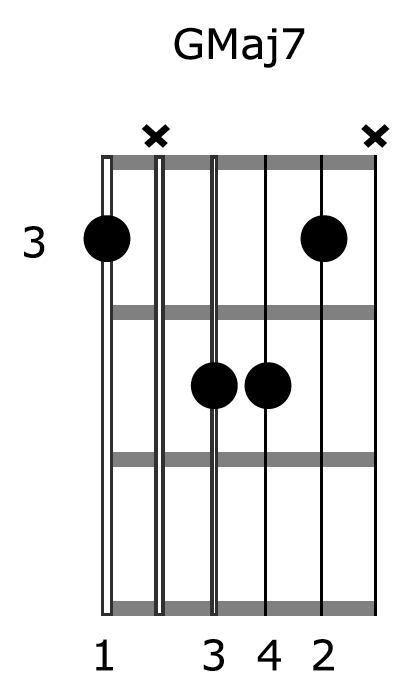
This is a common way to play a Major 7th chord in jazz and is very efficient as there are no duplicate notes.
Building The Walking Bass Line
If you're not familiar with the chord shapes shown above, don't worry. They are root 5 and 6 chord forms and should be easy to locate on the fretboard. As long as you can find bar chords on your guitar, you should have no trouble finding these chords
Here now are these chords spelling out our II V I progression from above:

From this we can extract the root note of each chord like so:

With the root notes extracted you now have the basic framework from which to create the walking bass line.
The Chromatic Approach
As I said earlier, we will focus on the chromatic half step approach for constructing the walking bass line in today’s lesson. It’s very simple.
Here is what you need to do beat by beat:
• Beat 1: Play the root of the current chord.
I will start by playing the root note of the Am7 chord on the 6th string/5th fret:
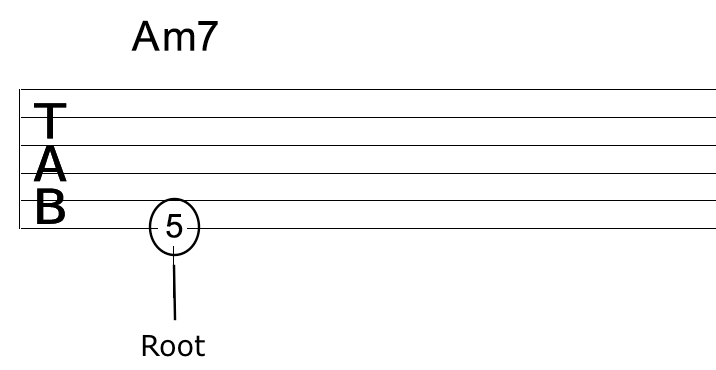
• Beat 2: Play one half step (one fret) above or below the root note.
I will play a half step (one fret) below the root note of the Am7 chord:
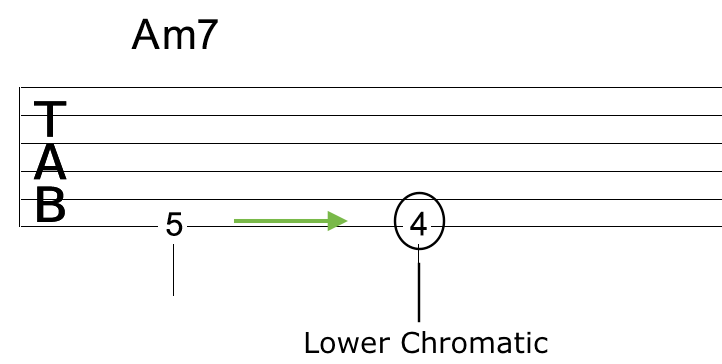
• Beat 3: Play the root of the chord.
Back to the root of the Am7 we go:
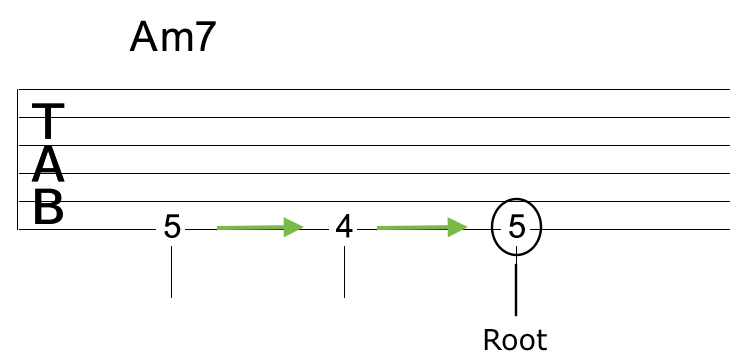
• Beat 4: Play one half step (one fret) above or below the root note of the next chord.
The next chord is D9, so I will play one half step (one fret) above the root note of this chord on the 5th string/6th fret:
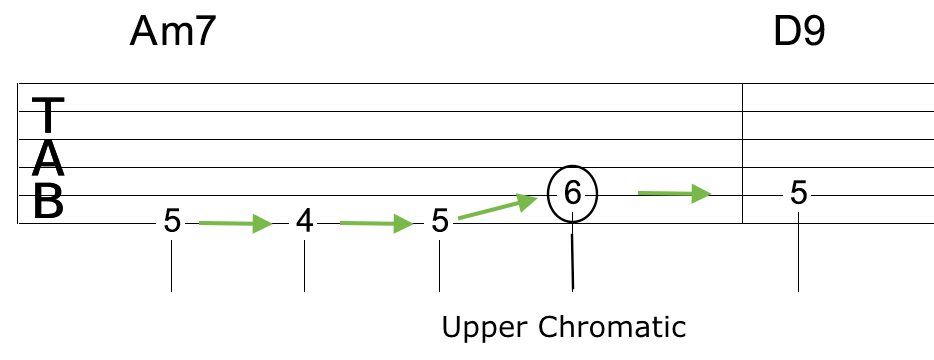
It is crucial to know the upcoming chord, as the note played on the fourth beat of the previous bar or any other beat before a chord change corresponds to the succeeding chord, not the current one. Similar to walking, with a walking bass line you need to be looking ahead to see where you are going.
You can then complete the bass line with the remainder of the progression, using our chromatic approach like so:

Because the duration of the GMaj7 chord is 2 bars, there is more space/beats to fill with the walking bass line.
To help fill this out, I elected to target the 5th of this chord, which is the D note on the 5th string/5th fret. This helps extend the line out without continually returning to the root note.
Adding Chords To Your Walking Bass
Next, simply add the appropriate chord shape from above on the first beat of each bar like so:

Now were getting somewhere!
The final step is to separate the root note from the chord like so:

This has the chord sounding in-between the notes of our walking bass line, just like a guitarist would typically do when comping chords along with the bass in jazz.
You may also choose to have more chord hits between the walking bass line if you wish:

For a step by step walkthrough (pardon the pun) tutorial on building and playing walking bass lines on guitar, as outlined int his article, check out the video below:
Learn more ways to create and play walking bass lines on guitar